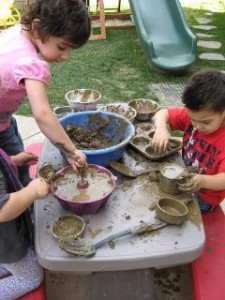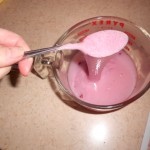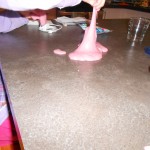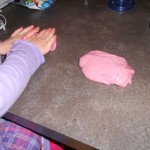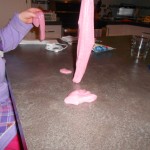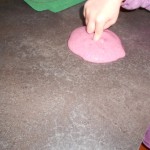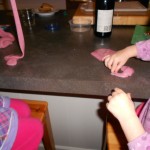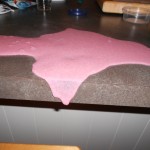Sensory play and sensory experiences are important events in a child’s day. Thru their senses, children come in contact with the world around them. Sight, sound, touch, taste, and smell are primary channels for information and influence how a child responds. Sensory activities also help the brain make connections and pathways for learning.
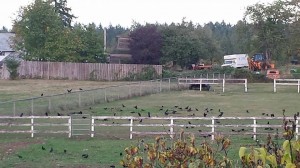 Besides having it’s own special sights, each season also has its own sounds. Some of the outside sounds of fall are birds flying south and the crunch of dried leaves. A friend heard a lot of noise in her yard and went to look. A flock of crows had landed and were chattering and cawing as they ate seeds from the dried plants. Sometimes, many birds will visit trees with berries and sing for their supper.
Besides having it’s own special sights, each season also has its own sounds. Some of the outside sounds of fall are birds flying south and the crunch of dried leaves. A friend heard a lot of noise in her yard and went to look. A flock of crows had landed and were chattering and cawing as they ate seeds from the dried plants. Sometimes, many birds will visit trees with berries and sing for their supper.
Some of the inside sounds are football games on the television and the heat turning on. Making popcorn is a favorite activity for anytime of the year, but it seems like we do it more often during the fall when night comes so much earlier. Zipping up coats is a sound that we do not hear much in the summer, but with cooler weather we are hearing it now.
Whether we are inside or outside, we often do not notice the small sounds in the background. A fun activity to do with your child, is to sit in a comfy spot, close eyes and just listen to the sounds for a minute. What did you hear? What did your child hear? Kids can listen to this video with their eyes closed and see if they can guess what it is. After a few guesses, they can listen again, but this time with their eyes open. Did they guess it was someone walking in leaves? They make lots of noise! Kids might want to go outside and crunch some leaves themselves. What other sounds are there for fall where your family lives?

